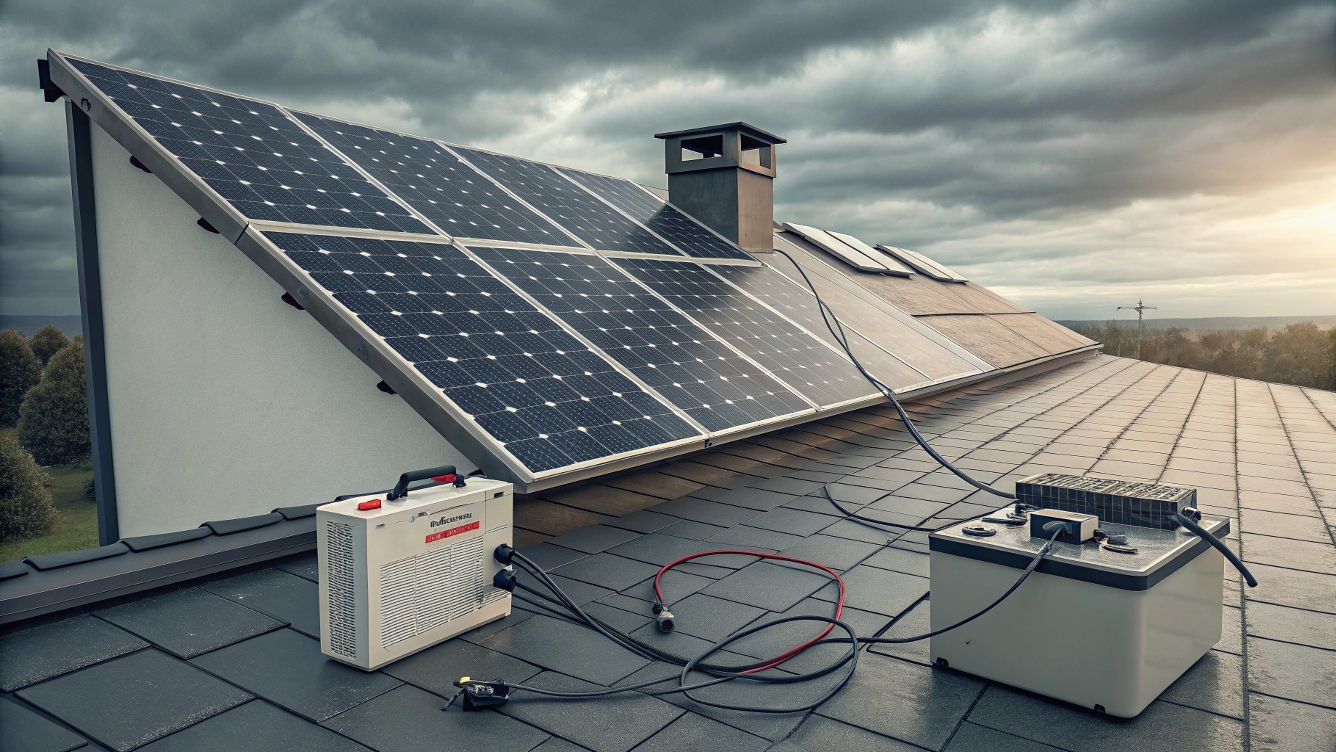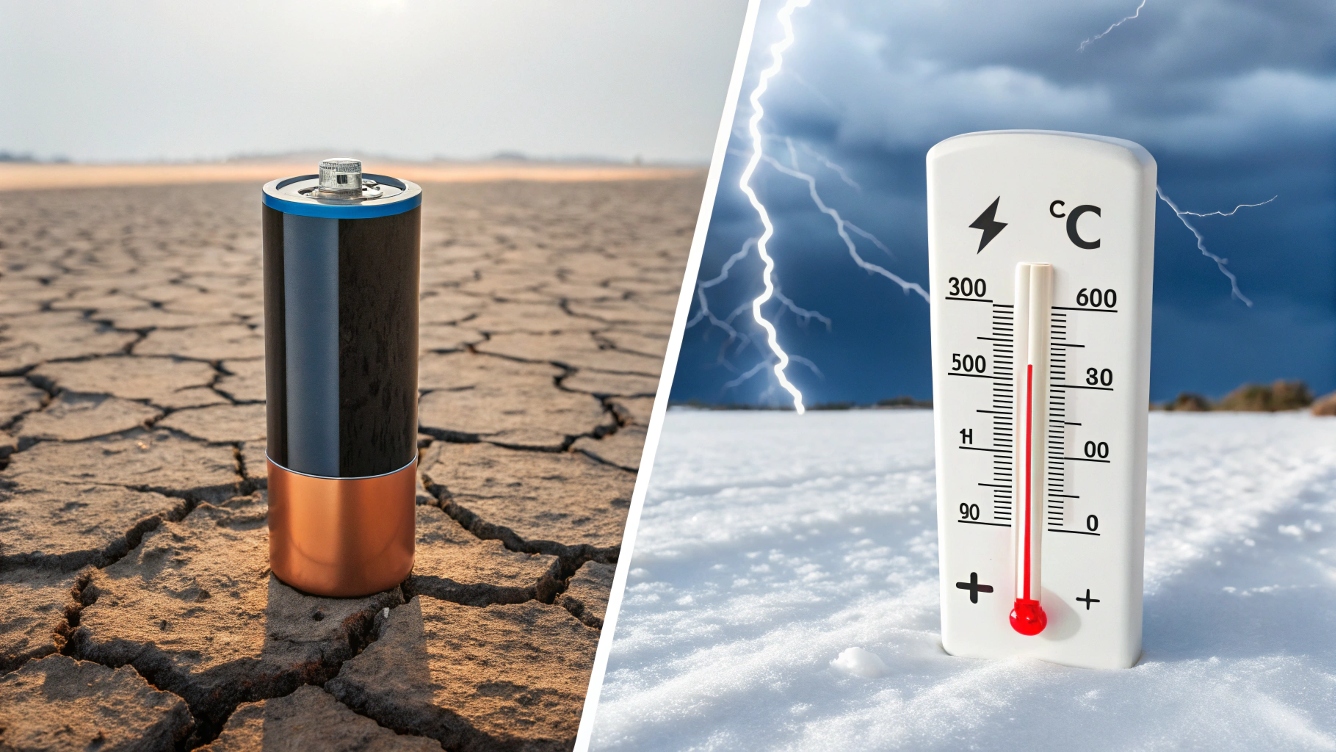
Quelle pourrait être la cause de la perte de puissance des batteries solaires?
UN Batterie solaire perd de l'énergie peut être frustrant, Mais comprendre les causes profondes vous aide à diagnostiquer et à résoudre le problème rapidement. Voici un Réponse rapide vous pouvez utiliser pour un extrait Google en vedette:
Réponse rapide: Une batterie solaire peut perdre de l'énergie en raison de âge et usure, charge inappropriée, Température extrêmes, charges excessives, sulfatation, Connexions lâches ou corrodées, un contrôleur de charge défectueux, Problèmes d'onduleur, ou un cellule de batterie défaillante.
1. Âge et usure
Au fil du temps, Toutes les batteries rechargeables voient une baisse progressive de la capacité. Même le meilleur Batteries solaires LifePO4 finira par tenir moins de charge après des milliers de cycles. Si votre batterie est proche ou dépasse sa période de garantie (souvent 10+ ans pour le lithium), La perte de capacité liée à l'âge est probable.
2. Charge inappropriée
- Sous-chargement: Ne pas atteindre la pleine charge de chaque cycle peut entraîner une «capacité échouée,"Où la batterie ne se termine jamais vraiment.
- Surcharge: Sans réglementation appropriée, surcharger dommage les plaques internes et raccourcir la durée de vie de la batterie.
Utilisez toujours un contrôleur de charge de qualité - préférable un MPPT modèle - pour maintenir une tension et un courant corrects.
3. Température extrêmes

La chimie de la batterie est très sensible à la température:
- À feu vif (> 40 °C): Accélère la dégradation interne.
- Gel (< 0 °C): Réduit la capacité disponible et peut causer des dommages permanents.
Gardez les batteries dans un enceinte climatique ou utilisez des paramètres de charge compensés sur la température sur votre contrôleur.
4. Charges excessives
Tirer plus de courant que la batterie recommandée Caisse provoque une chute de tension rapide. Par exemple, dessinant une puissance élevée continue à travers un 2000Onduleur W peut épuiser un 200Batterie AH beaucoup plus rapide que prévu.
5. Sulfatation (Batteries au plomb-acide uniquement)
Dans les batteries au plomb, Les cristaux de sulfate se forment sur les plaques lorsqu'ils sont laissés dans un état déchargé. La sulfatation bloque le matériau actif, réduire à la fois la capacité et la facturation d'acceptation. Pour atténuer:
- Effectuer Frais d'égalisation périodiquement (Consignes du fabricant).
- Maintenir au moins 50% état de charge pour minimiser le risque de sulfatation.
6. Connexions lâches ou corrodées
Une mauvaise connexion terminale ou un câble corrodé peut introduire une résistance élevée, Réduire le courant de charge et provoquer des chutes de tension sous charge. Inspecter et serrer Toute batterie, contrôleur, et les connexions de l'onduleur, et propre corrosion avec une solution de pâtisserie si nécessaire.
7. Contrôleur de charge défectueux
Un contrôleur défectueux peut charger, surcharge, ou Échec de la détection la batterie correctement. Si vous remarquez des modèles de charge irréguliers ou des contrôleurs de surchauffe, tester avec une unité connue ou faire entretenir.
8. Cellule de batterie défaillante
En batteries multi-cellules, Une seule mauvaise cellule peut faire glisser toute la tension du pack. Les symptômes comprennent:
- Tension rapide s'affaisse sous chargement.
- Une batterie dans une banque parallèle montrant une tension nettement inférieure.
UN Système de gestion de batterie (GTC) peut aider à détecter et à isoler les cellules défaillantes dans batterie au lithium packs.
9. Problèmes d'onduleur
Un onduleur défectueux peut dessiner un courant de veille excessif ou ne pas convertir l'alimentation efficace, provoquant un drainage de la batterie même lorsqu'aucune charge n'est active. Vérifiez les paramètres de l'invertisseur et mesurez son tirage au ralenti.
10. Fusibles ou disjoncteurs soufflés
Un fusible soufflé ou un disjoncteur déclenché dans le circuit de charge arrêtera complètement le courant de charge, Permettre à la batterie de se décharger sans reconstitution. Inspectez régulièrement toutes les fusibles et briseurs en ligne.
Liste de contrôle de dépannage
| Étape | Action |
|---|---|
| 1 | Inspectez et resserrez toutes les connexions de la batterie et de l'onduleur. |
| 2 | Vérifiez la fonctionnalité et les paramètres du contrôleur de charge. |
| 3 | Mesurez la tension de batterie au repos et comparez aux spécifications. |
| 4 | Vérifiez les courants de charge excessifs sur l'onduleur. |
| 5 | Moniteur Température de la batterie et assurer une bonne ventilation. |
| 6 | Tester la sulfatation (leadacide) ou déséquilibre cellulaire (lithium). |
| 7 | Remplacez les fusibles ou les briseurs défectueux soufflés. |
FAQ
Q: Pourquoi ma batterie solaire s'écoule-t-elle pendant la nuit?
UN: Charges de veille des onduleurs, contrôleurs, ou des systèmes de surveillance peuvent dessiner de l'énergie s'ils ne sont pas étents. Vérifiez également les parasites comme un contrôleur de charge défectueux.
Q: Comment réparer la sulfatation dans les batteries au plomb-acide?
UN: Effectuer une charge d'égalisation - Raccourcir la tension de charge au point de consigne du fabricant pendant plusieurs heures sous surveillance.
Q: Un BMS peut-il aider à prolonger la durée de vie de la batterie?
UN: Oui. Un système de gestion de la batterie équilibre les tensions cellulaires, Empêche la surfacturation / sous-charge, et surveille la température.
Conclusion & Étapes suivantes
UN Batterie solaire perd de l'énergie est généralement un symptôme de problèmes sous-jacents - que ce soit l'âge, charge inappropriée, ou défauts matériels. En suivant les étapes de dépannage ci-dessus et en investissant dans des composants de qualité comme un contrôleur de charge et un système de gestion de batterie robuste, Vous pouvez restaurer et maintenir les performances de votre système.
Besoin d'aide pour diagnostiquer votre configuration solaire? Contactez nos experts pour une vérification du système gratuit et explorez notre gamme de batteries solaires et onduleurs Pour garder votre puissance qui coule de manière fiable.

